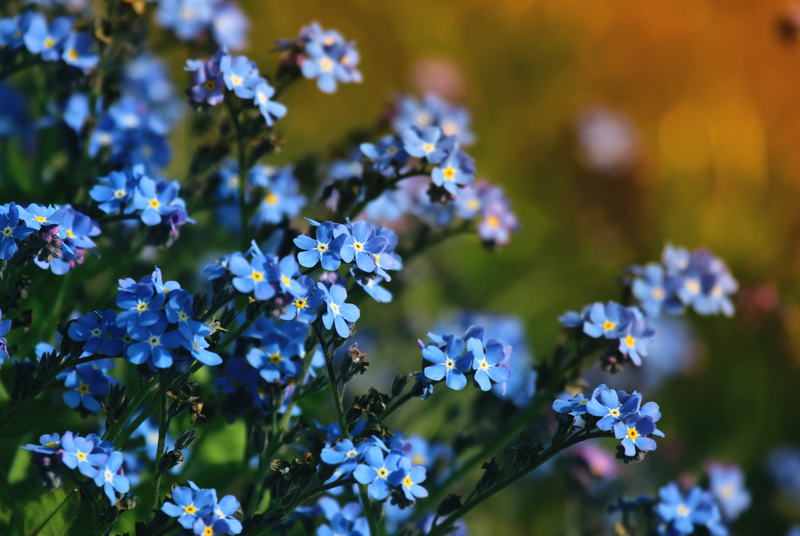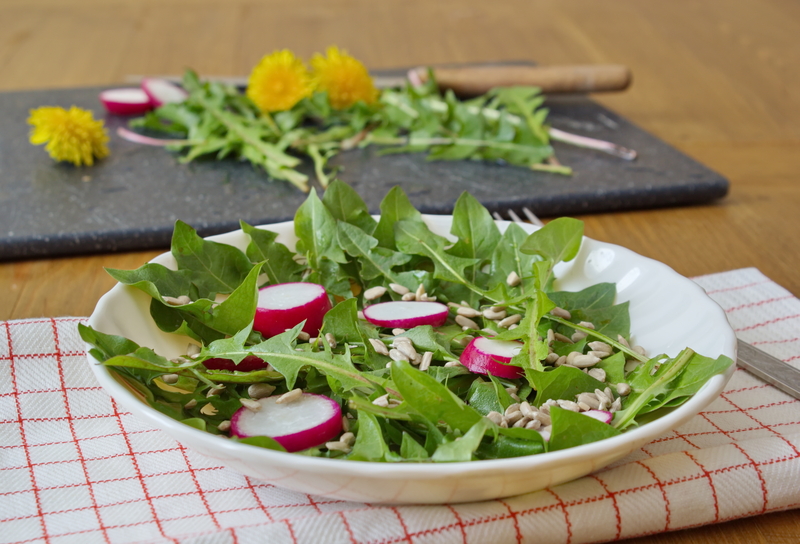Revamp Your Garden with Creative Hedge Trimming Techniques
Posted on 03/07/2025
Revamp Your Garden with Creative Hedge Trimming Techniques
Are you looking to breathe new life into your outdoor space? If you want to revamp your garden and add a touch of sophistication and artistry, creative hedge trimming techniques can make a transformative difference. Well-tended hedges not only frame your home beautifully but also define spaces, provide privacy, and showcase your unique style. In this comprehensive guide, we'll explore innovative hedge cutting ideas, tools, design concepts, and provide step-by-step instructions for trimming techniques that go far beyond traditional shapes. Whether you're a beginner or an experienced gardener, there's something inspiring for you here!
Why Upgrade Your Garden with Creative Hedge Trimming?
Hedges are more than green boundaries; they are living sculptures in your garden landscape. Embracing creative hedge trimming gives you the power to:
- Transform plain hedges into stunning focal points
- Add personality and vivid interest to any garden style
- Increase curb appeal and perceived property value
- Encourage better plant health and longevity
- Direct the flow of movement in your outdoor space
By moving away from basic rectangles and squares, you can infuse your garden with creative shapes, whimsical topiary designs, and lush, healthy growth that captivates guests year-round.

Understanding Hedge Types and Their Creative Potential
Before you unleash your creativity with trimming shears, it's important to know which hedges best suit decorative shaping. Different species respond to trimming in unique ways:
- Boxwood (Buxus) - Ideal for precise designs, geometric shapes, and intricate topiary art due to its dense foliage and slow growth.
- Yew (Taxus baccata) - Versatile, shade-tolerant and capable of tight, detailed trims.
- Privet (Ligustrum) - Fast-growing and hardy, perfect for trial and error with bolder designs.
- Lonicera nitida - Compact and responsive to shaping, suitable for creative hedge sculpturing.
- Holly (Ilex) - Offers glossy foliage and support for festive or formal trims.
- Thuja, Hornbeam, and Laurel - Great for lush, larger shapes and evergreen privacy hedges that still look creative after trimming.
Tip: Always check your hedge's growing habits - certain evergreen and deciduous types may require special attention when adopting new hedge trimming ideas.
Essential Tools for Creative Hedge Trimming
Achieving eye-catching results starts with the right equipment. For professional and precise hedge cutting techniques, consider using:
- Hand Shears: Perfect for detail work, shaping, finishing touches, and smaller topiary projects.
- Electric or Petrol Hedge Trimmers: Best for uniformity on longer hedges and basic shaping before refining by hand.
- Pruning Loppers: Essential for dealing with thicker branches or mature growth.
- Topiary Frames or Templates: Ideal for complex designs, ensuring each trim is symmetrical and true to your vision.
- String and Stakes: Ensure straight edges and help outline curves in large, creative hedge designs.
- Safety Gear: Don't neglect thick gloves, eye protection, and sturdy shoes for a safe and enjoyable creative project.
Pro Tip:
Clean, sharp tools speed up the process and leave healthier cuts, reducing vulnerability to pests and diseases. Regular cleaning and maintenance will keep your tools in top condition.
Creative Hedge Trimming Techniques to Try
Ready to revamp your garden with creative hedge trimming methods? Here are some inspiring approaches that blend style, tradition, and innovation.
1. Geometric Precision: Boxes, Balls, and Spirals
- Boxes and Rectangles: The foundation of formal gardens, but with a modern twist, experiment with floating cubes, tiered rectangles or raised hedge platforms.
- Balls and Spheres: Create dynamic features by dotting spherical shapes throughout informal borders, mixing different sizes for added visual depth.
- Spirals: Carefully taper columns or cones into elegantly twisting shapes using string as a guide and step back frequently to ensure symmetry.
Geometric shapes can subtly guide the eye, create harmony, and make even small gardens appear more stately and deliberate.
2. Topiary Art: Animals, Objects, and Living Sculptures
- Animal Topiaries: Shape hedges into birds, rabbits, peacocks, or your favorite pets for a garden filled with character and storytelling.
- Objects and Forms: Craft living chess pieces, teapots, or whimsical spirals to revamp your hedge with playful creativity.
- Framed Topiary: Use wire frames as guides for ambitious projects and remove them once the form is established.
Topiary art requires patience, regular pruning, and a bit of imagination but yields extraordinary, head-turning garden displays.
3. Waves and Organic Curves
- Wave Hedges: Gently roll the tops of long hedges to mimic the movement of waves, creating soft lines that animate the landscape.
- Undulating Edges: Incorporate convex and concave shapes to provide rhythm and soften the hard geometry typical of traditional garden design.
Organic forms harmonize with nature, blend beautifully with flower borders, and provide a modern, artistic look.
4. Layered, Tiered, or Stepped Hedges
- Multi-Level Trims: Vary hedge heights in steps or terraces for dramatic structure and depth.
- Integrate with Planting: Layer hedges of different colors or textures to create living mosaics that adapt throughout the seasons.
This technique pairs especially well with sloped gardens and large landscapes, giving the illusion of movement and architectural intrigue.
5. Negative Space & Windows
- Hedge Windows: Trim intentional gaps or 'windows' in dense hedges to frame a favorite tree, statue, or distant view.
- Archways & Tunnels: Carve passageways into tall hedges or hedgerows for enchanting garden journeys and a magical secret-garden effect.
Using negative space amplifies visual drama, draws the eye to focal points, and establishes a sense of discovery within the garden.
Step-by-Step Guide to Creative Hedge Trimming
Follow this detailed method to guarantee satisfying, professional-quality results when trying out new hedge trimming techniques:
-
Prepare Your Tools and Hedge:
- Sharpen and clean blades.
- Remove debris, bird nests, or pests from the hedge.
- Tie back surrounding plants or flowers for protected access.
-
Mark Your Design:
- Use string, chalk, or stakes to outline geometric shapes and curves.
- For topiary, install a wire frame as your guide.
-
Start with a Rough Trim:
- Use power trimmers for the main structure, trimming just outside the guide.
- Step back regularly to check symmetry and adjust as needed.
-
Refine with Hand Shears:
- Create crisp edges and smooth surfaces.
- Shape gently, making smaller cuts for precision and plant health.
-
Clean Up and Care:
- Remove clippings from foliage and ground.
- Feed with suitable fertilizer and water well, especially after drastic trims.
- Inspect for disease or stress and address promptly.
Maintenance Tips for Lasting Creativity
Consistent care is vital to ensuring your creative hedge trimming remains crisp, healthy, and beautiful:
- Trim Lightly and Frequently: A little, often, is better than drastic, infrequent cuts.
- Choose the Right Season: For most hedges, the main shaping trim is done late spring or early summer. Rapid growers may need an autumn tidy-up.
- Feed and Mulch: Support lush regrowth with organic compost and keep roots moist with mulch.
- Watch for Pests: Avoid deep cuts during nesting season for birds and be alert for signs of aphids or fungal disease.
- Reassess Your Design: Be open to minor adjustments as plants mature or your creativity evolves.
Incorporating Hedges into Garden Design
Hedges can form the backbone of both classic and contemporary landscapes. Here's how to integrate creative hedge trimming into your larger garden vision:
- Frame a Feature: Use bold topiary or geometric shapes to draw the eye to garden statues, water features, or architectural highlights.
- Define Spaces: Design outdoor 'rooms' or secret nooks by layering hedges with different gradient heights.
- Mix and Match: Combine flowering, colored, and evergreen hedges for a tapestry effect that evolves with the seasons.
- Accent Pathways: Guide visitors along curves and waves for whimsical intrigue.
No matter your style -- be it formal, cottage, or contemporary -- reinventing your garden with creative hedge trimming can elevate any setting.
Inspirational Hedge Trimming Ideas from Around the World
- French Parterre Gardens: Known for their formal symmetry and low box hedges clipped into intricate swirls, fleurs-de-lis, and arabesques.
- English Knot Gardens: Interwoven geometric patterns using colored foliage or aromatic herbs for living embroidery.
- Japanese Cloud Pruning (Niwaki): Hedges sculpted into soft, cloud-like shapes for serene, Zen-like atmospheres.
- Italian Renaissance Topiary: Grand, ornamental forms -- cones, pyramids, peacocks -- often lined along walkways in stately villas.
- Modern Artistic Topiary: Contemporary gardens worldwide now feature avant-garde shapes -- abstract forms, graffiti-style spirals, even entire living 'walls'!
These international inspirations can be adapted to gardens of any size, providing endless possibilities for creative expression.
Eco-Friendly Hedge Trimming Techniques
Revamping your garden with modern hedge trimming doesn't mean sacrificing wildlife or sustainability:
- Trim outside nesting season (late autumn) if your garden is home to birds.
- Use manual tools for quiet, low-emission shaping in smaller gardens.
- Compost clippings for an eco-friendly mulch or soil amendment.
- Opt for organic pest control to protect pollinators and beneficial insects.
Common Mistakes to Avoid in Creative Hedge Trimming
- Cutting too much foliage in one session: Causes stress and unsightly gaps; trim a little at a time for neat results and quick recovery.
- Ignoring the base: Always trim hedges slightly wider at the base to allow even light exposure and lush leaf growth from top to bottom.
- Trimming at the wrong time of year: Risk damaging new buds or disturbing nesting wildlife; research your specific hedge type for optimal seasons.
- Neglecting tool maintenance: Dull blades tear instead of cut, leading to brown edges and infection risk.
- Forgetting irrigation: Hedges benefit from good watering, especially after shaping, to bounce back strong and vibrant.

Frequently Asked Questions (FAQs) About Creative Hedge Trimming
How often should I trim a creative hedge design?
Most creative hedge shapes benefit from light trims 2-3 times a year. Fast-growers or topiary art may need monthly attention during peak growing season.
Does creative trimming harm my hedge?
With the proper technique, right timing, and aftercare, creative trimming actually encourages denser, healthier growth and can rejuvenate tired-looking hedges.
Can I transform an old, overgrown hedge with artistic trimming?
Yes! Begin by renovating with incremental, gentle pruning. Over a few seasons, shape gradually to avoid shocking the plant. Rescue even the oldest hedge with time and patience.
What are the best hedges for topiary or intricate designs?
Boxwood, yew, privet, and lonicera nitida are favorites for their small leaves and easy training, but feel free to experiment with others depending on your climate and creativity.
Conclusion: Transform Your Outdoor Space with Hedge Trimming Creativity
Revamp your garden with creative hedge trimming techniques and transform your outdoor space into a living artwork that reflects your imagination. By combining traditional shapes with playful innovation, using the right tools, and caring properly for your plants, you'll not only increase your home's beauty and value but also create a legacy of green artistry for years to come. Start small, dream big, and shape your vision into reality -- the only limit is your creativity!
Looking for more expert gardening advice and inspiration on hedge trimming ideas? Stay tuned for future articles, and happy trimming!



